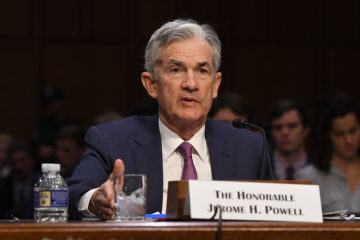 Servaas Storm over at INET:
Servaas Storm over at INET:
In the waning days of August, in a world beset by the unending COVID19 public health crisis, by increasingly frequent extreme climate events, and by the terrible news from Afghanistan, the world’s central bankers, the rich, and the influential gathered (online) for the Federal Reserve Bank of Kansas City’s annual Jackson Hole symposium. The title of this year’s Economic Policy Symposium was “Macroeconomic Policy in an Uneven Economy.” Few observers were paying attention and most had low expectations, knowing that central bankers are caught in a catch-22: they cannot lower interest rates (already at the zero-lower bound) to boost the economy, and they cannot raise rates, because the current high private and public debts are sustainable only at very low interest rates. Likewise, central bankers are unable to discontinue their accommodative (QE) policies, because this would abruptly end the irrational exuberance in financial markets and risk another global financial crash. Indeed, Fed chair Jay Powell’s speech was predictably careful, cautiously outlining how the Fed will continue its accommodative policy, while steadily monitoring data for signs of persistent broad-based inflation. No news from the monetary policy front, in other words.
However, one of the contributions to the symposium, a paper by Atif Mian, Ludwig Straub, and Amir Sufi (2021), managed to make headlines in the New York Times and the Financial Times (amongst others). The authors argue that high income inequality is the cause, not the result, of the low natural rate of interest r* and high asset prices evident in recent years. “As the rich get richer in terms of income, it creates a saving glut,” Professor Mian told the New York Times, “The saving glut forces interest rates to fall, which makes the rich even wealthier. Inequality begets inequality. It is a vicious cycle, and we are stuck in it” (Irwin 2021).
More here.
